The boa constrictor, with its stunning patterns and unique behaviors, has captivated reptile enthusiasts for decades. Their popularity as pets continues to rise, offering an exciting and rewarding experience for those who appreciate these captivating creatures. However, before welcoming a boa constrictor pet into your life, understanding their specific needs and providing proper care is absolutely crucial for their survival. Furthermore, it is recommended to seek out reliable sources to buy boa constrictors. This will ensure that the snake has been properly cared for and does not exhibit any signs of illness or parasites.
So, if you decide to bring a boa constrictor into your home as a pet, this detailed guide will provide you with the information you need to become a responsible owner.
Considering Owing a Boa Constrictor?
If you are planning to become the owner of a boa constrictor, it is important to determine whether you are prepared to take on this responsibility. Additionally, consider your lifestyle and schedule to ensure you will have the necessary time and attention to properly care for your pet snake. The following are some key factors to consider:
- Lifestyle: The lifespan of a boa constrictors can range from 20 to 30 years. Are you willing to commit to a long-term relationship? A consistent effort is required to maintain their health, including feeding, cleaning, and maintaining their environment.
- Legality: Local regulations and restrictions may apply to boa constrictors. Be sure to research local ordinances before acquiring one.
- Experience: Boa constrictors are usually not recommended for first-time reptile owners. To gain experience before introducing a boa constrictor, consider starting with a species of reptile that is easier to maintain.
-
Temperament: Boa constrictor snake pets have diverse personalities and temperaments. While some may be docile, others may be more aggressive. Make sure you research different boa constrictor subspecies and their typical personalities before buying one.

An Overview of the Characteristics of the Common Boa Constrictors
Pet boa constrictors are available in a variety of morphs and sizes. Common boa constrictors include the Boa constrictor imperator (Boa imperator), also known as the Common Boa Constrictor, and the Colombian Boa Constrictor (Boa imperator constrictor). Most boa imperators grow to a maximum length of four to ten feet, while Colombian boas are capable of reaching a maximum length of 12 feet.
In Central and South America, boa constrictors live in solitary, nocturnal communities. In other words, they are constrictors, which means that they kill their prey by squeezing them in order to restrict their breathing. When kept in captivity, they are typically fed frozen, pre-killed prey items such as rodents.
Creating the Perfect Boa Constrictor Habitat
For your boa constrictor to stay healthy and happy, it is crucial that it has a proper enclosure. Here is what you will need to get started:
- Dimensions of the Enclosure: The minimum recommended tank size for an adult boa constrictor is 4' x 2' x 2' (length x width x height). Provide enough space for your boa to fully stretch out and climb.
- Suitable Substrate: Your boa should be kept on a substrate that is absorbent, easy to clean, and safe for accidental ingestion. Among the most popular options are aspen chips, coconut coir, and repti-carpet.
- Heating: Boa constrictors are cold-blooded reptiles and require a heat gradient within their enclosure. Various heating sources can be used to provide warmth, such as heat lamps or under-tank heaters.
- Hides: It is recommended that you provide your boa with at least two hides, one on the warm side and one on the cool side, so that it can feel secure and hide when necessary.
- Water Dish: Provide your boa with a fresh water dish that is large enough for it to soak in. Water should be changed on a regular basis in order to keep it clean.
- Decorations: You can enrich your boa's environment with branches, climbing structures, and fake plants.
Additionally, the following tips will help you maintain a healthy habitat for your boa snake:
- For boa constrictors, maintaining proper humidity levels is imperative, typically between 50 and 70%. A hygrometer is an effective tool for monitoring humidity levels.
- Adequate ventilation within the container is essential to prevent stagnant air and respiratory issues.
- To maintain a healthy environment for your boa constrictor, regular cleaning is required, including spot cleaning if necessary and a complete cleaning every few weeks.
Boa Constrictor Feeding Instructions
Considering that boa constrictors are carnivorous, they require a diet that includes prey items that have been frozen and pre-killed. Depending on the age, size, and activity level of your boa, you will need to feed it more often. A juvenile typically consumes more food than an adult.
The following is a general guide to feeding your boa companion:
- Neonates: Pinkies (newborn mice) should be fed every 7-10 days.
- Juveniles: During their growing phase, feed fuzzy mice or small rats every 10 to 14 days.
- Adults: Adult boa constrictors should be fed rats or rabbits every three to four weeks depending on their size.
There are some other important feeding tips that you should keep in mind as well:
- Never feed your boa constrictor live prey. Prey that is alive can injure your snake and cause it to become ill.
- Before offering frozen prey items to your boa, they should be completely thawed.
- Do not feed your boa constrictor if it is in a shed. You should wait until the shedding process is complete before providing food to the pet.
- Keep an eye on your boa's weight to ensure that it does not become overweight or underweight.
Boa Constrictor Care and Handling: What You Need to Know
The boa constrictors snake is capable of being cared for and handled, but it is important to prioritize safety and respect for your pet. To ensure positive interactions, follow these guidelines:
Get Your Hands Clean Thoroughly
Each time you handle a reptile, wash your hands with reptile-safe soap or use a disinfectant solution before and after handling. In this way, you can minimize the risk of transmitting harmful bacteria to your boa constrictor, which has a weaker immune system than other pets.
Support Your Boa's Body Fully
Boa constrictors should never be lifted by their tails or grabbed abruptly. Instead, approach them calmly and let them crawl onto your wrist or upper arm from a secured location. After they have been settled, gently support their head with one hand and gently hold their back with the other hand.
Stay Calm and Confident
Boa constrictors are capable of picking up on human emotions. Keep a safe distance from them by avoiding sudden movements or loud noises that could scare them. To build trust with your pet, speak softly and move slowly.
Observe your Boa's Behavior
Keep an eye out for your boa constrictor's body language. The presence of hissing, puffing up the throat, or coiling tightly indicates defensiveness or stress. Put them back in their enclosure and try handling them again at a later date.
Respect the Individuality of your Pet
The temperament of boa constrictors varies just like that of humans. It may be enjoyable for some individuals to receive gentle handling and exploration, while others may prefer minimal interaction. Your care and handling sessions should be individualized based on your boa's behavior. Limit handling and provide a calm environment in their enclosure if they consistently seem stressed.
Keep in mind that handling your boa constrictor should be a positive experience for both of you. Begin with short sessions and gradually increase their duration as your boa becomes more comfortable. If they seem unwilling to interact with you, always place their well-being first.
Following are some additional tips for successfully caring for a boa constrictor:
- Make sure they are handled during their active periods.
- You should sometimes allow them to initiate contact.
- Be sure to supervise children and inexperienced handlers.
The health requirements of boa constrictors is similar to that of any pet. The following are some common conditions to be aware of:
Infections of the respiratory system: An increase in humidity levels or a decrease in temperature can contribute to respiratory infections. Your reptile may experience symptoms such as wheezing, coughing, and mouth breathing.
- Infections of the respiratory system: An increase in humidity levels or a decrease in temperature can contribute to respiratory infections. Your reptile may experience symptoms such as wheezing, coughing, and mouth breathing.
- Ticks and mites: Boa constrictors can be infected by external parasites. There is a need for regular cleaning and parasite prevention strategies.
- Rotation of the scales: A bacterial infection can lead to scale rot, a condition characterized by raised, discolored scales.
- Obesity: The overfeeding of boa constrictors can lead to weight gain. Maintain a close eye on your boa's weight and adjust their feeding schedule if necessary.

Wilbanks Reptiles: A Reliable Breeder of Boa Constrictors
With dedicated boa constrictor breeders who prioritize ethical breeding practices and exceptional reptile welfare, Wilbanks Reptiles stands out as a reputable destination for reptile enthusiasts. We emphasize ethical breeding practices to ensure the well-being of our pets, in order to keep them healthy and vibrant. Boasting a wide array of morphs and colors, our breeding program caters to all types of reptile enthusiasts.
Our boa constrictors are meticulously cared for from birth, so they're not only beautiful, but also well-adapted and robust. You will find a boa constrictor to captivate your imagination at Wilbanks Reptiles, whether you prefer the classic patterns of a Common Boa or the intricate beauty of a designer morph. Our dedication to excellence and commitment to customer satisfaction make us a trusted source to acquire boa constrictor companions.
Final Thoughts
Boa constrictor ownership can be an incredibly rewarding experience for reptile enthusiasts, but it also comes with significant responsibilities.
We have covered every aspect of boa constrictor care, from understanding their long lifespan to creating a suitable habitat, feeding them a suitable diet, and ensuring their health and well-being. In addition, guidelines on safe handling techniques and recognizing common health problems have been provided to ensure a positive relationship between the owner and the pet.
Moreover, being a responsible owner of a boa constrictor requires education and preparation. By following the guidelines provided in this guide and continually learning about your pet's needs, you can create a fulfilling and enriching environment for both yourself and your boa constrictor companion. With patience, dedication, and a deep respect for these incredible creatures, you can enjoy a lifetime of companionship with your boa constrictor pet.









